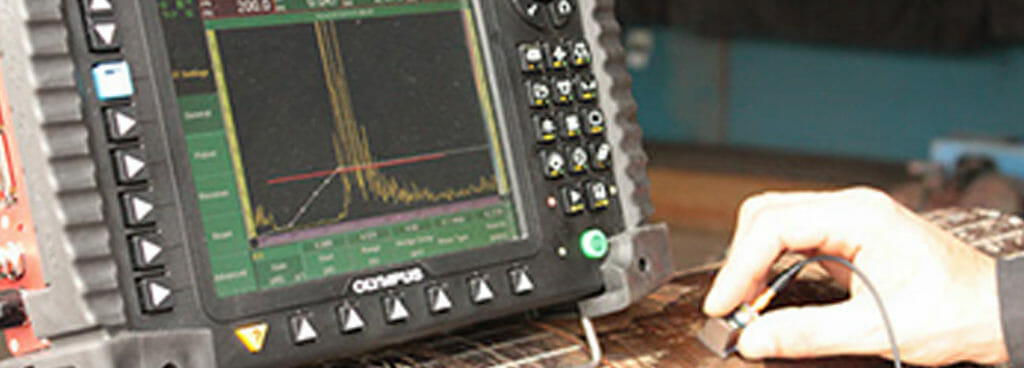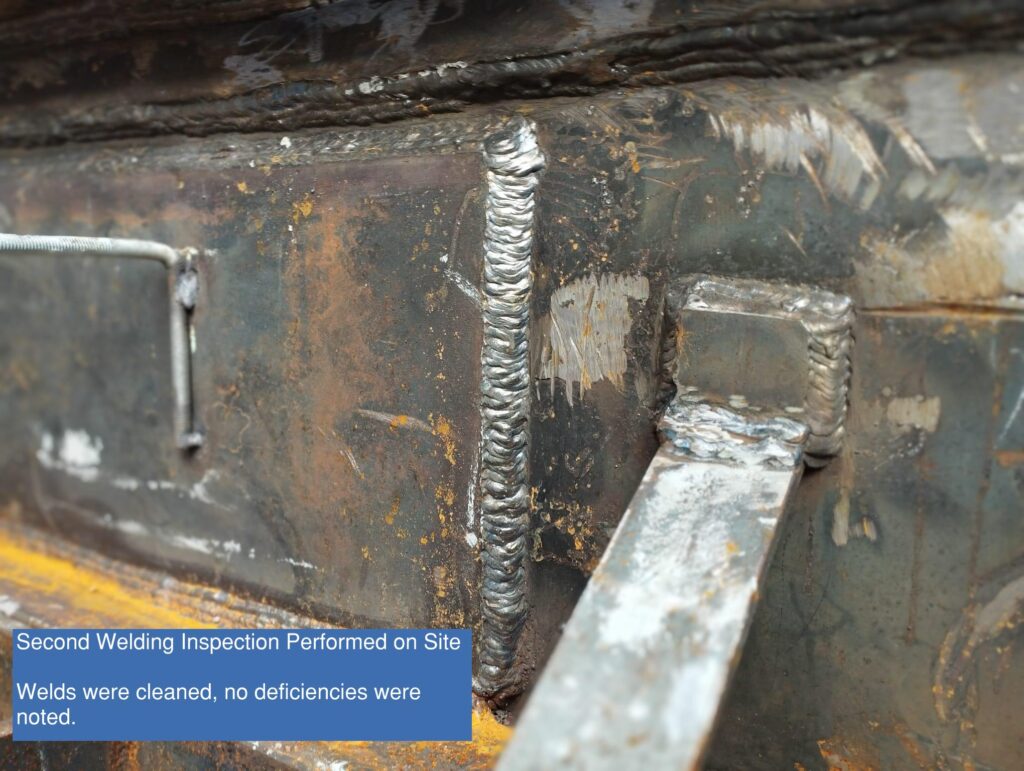What to Expect from a Comprehensive Welding Inspection Racine
What to Expect from a Comprehensive Welding Inspection Racine
Blog Article
Ingenious Techniques to Fillet Weld Assessment and Testing: Enhancing Weld High Quality and Compliance Criteria
In the realm of welding, the top quality and integrity of fillet welds play an important function in making certain the architectural strength and reliability of various commercial parts. With the constant drive for boosted performance and compliance with rigid requirements, the exploration of cutting-edge methods to fillet weld examination and screening has actually become crucial.
Advanced Non-Destructive Testing Methods
Utilizing modern technologies, advanced non-destructive testing techniques play a vital duty in ensuring the integrity and top quality of fillet welds. These approaches, such as phased variety ultrasonic testing (PAUT) and magnetic fragment screening (MPT), offer detailed understandings right into the weld's inner structure without triggering any damage to the product. PAUT, for example, utilizes multiple ultrasonic aspects to evaluate the weld from numerous angles, providing a comprehensive visualization of possible defects like lack of combination or fractures.
By using these sophisticated non-destructive testing methods, weld assessors can accurately analyze the high quality of fillet welds, ensuring conformity with market requirements and policies. The ability to detect imperfections early on not only improves weld quality but also avoids pricey rework or failures in structural integrity, highlighting the importance of these innovative screening methods in welding assessments.
Robotics and Automation in Evaluation
The integration of robotics and automation has revolutionized the examination procedure for fillet welds, boosting effectiveness and precision in top quality analysis. Robotics provide accurate control and repeatability in inspecting welds, making certain reliable and regular outcomes. Automated systems can be set to follow specific examination paths, making sure extensive coverage of welds and lowering the threat of human error.
Robotic inspection systems outfitted with innovative sensing units can discover and determine weld features with high accuracy, providing thorough data for evaluation. These systems can identify problems such as cracks, lack of fusion, and porosity, enabling punctual corrective actions to be taken. Furthermore, robotics and automation permit real-time information collection and analysis, offering instant feedback to operators and facilitating fast decision-making procedures.
Furthermore, the use of robotics and automation in fillet weld evaluation improves total productivity by decreasing assessment times and boosting assessment throughput. By improving the inspection procedure, suppliers can guarantee weld high quality and compliance standards are fulfilled effectively, inevitably leading to cost financial savings and enhanced product quality.
Utilizing Expert System for Evaluation
Expert system plays an essential function in boosting the efficiency and accuracy of evaluation in fillet weld inspection procedures. By harnessing the power of AI, assessors can enhance the evaluation of weld high quality and conformity standards, resulting in a lot more accurate and dependable outcomes. AI algorithms can rapidly process substantial amounts of data from weld inspections, identifying issues or variances that might be testing to understand the nude eye. This advanced innovation enables real-time surveillance of weld high quality, permitting for instant restorative actions to be taken if any type of problems are identified.
In addition, AI systems can gain from previous inspection information, continuously enhancing their capability to determine prospective defects and inconsistencies in fillet welds. This adaptive learning ability improves the general high quality control process, minimizing the likelihood of human mistake and ensuring that welds meet the called for standards. By integrating expert system into fillet weld analysis, industries can achieve greater levels of effectiveness, uniformity, and conformity in their assessment practices.
Portable Tools for On-Site Evaluation
 Enhancing area inspection efficiency, the adoption of portable devices revolutionizes on-site assessment processes for fillet welds. These devices supply adaptability and ease, enabling assessors to perform comprehensive examinations in various locations, consisting of remote or difficult atmospheres. Portable devices such as ultrasonic testing devices, magnetic particle evaluation tools, and electronic radiography systems supply real-time data and high-resolution imaging capacities, allowing fast decision-making and instant feedback on weld top quality.
Enhancing area inspection efficiency, the adoption of portable devices revolutionizes on-site assessment processes for fillet welds. These devices supply adaptability and ease, enabling assessors to perform comprehensive examinations in various locations, consisting of remote or difficult atmospheres. Portable devices such as ultrasonic testing devices, magnetic particle evaluation tools, and electronic radiography systems supply real-time data and high-resolution imaging capacities, allowing fast decision-making and instant feedback on weld top quality.One considerable benefit of portable devices is their capacity to improve evaluation procedures, lowering downtime and enhancing general productivity. Examiners can conveniently carry these devices to different task websites, removing the need for delivering heavy equipment or components to off-site centers. Additionally, the transportability of these tools advertises cost-effectiveness by minimizing transport expenses and speeding up examination timelines.
Moreover, using mobile devices for on-site assessment advertises positive top quality control actions, as inspectors can without delay recognize and deal with any potential welding defects or inconsistencies. By integrating these innovative technologies right into on-site examination techniques, welding experts can ensure conformity with industry criteria and improve weld quality, ultimately bring about enhanced architectural integrity and security in various welding applications.
Combination of Information Management Systems
Having enhanced on-site evaluation processes through the utilization of portable pop over here tools, the following phase entails the seamless integration of data administration systems to additionally directory enhance performance and information analysis abilities in fillet weld evaluation and testing. Welding Inspection Racine. By integrating data administration systems into the assessment procedure, organizations can enhance information collection, storage, and evaluation. This combination permits real-time surveillance of weld high quality, immediate identification of problems, and punctual decision-making to rectify any issues that might occur throughout the examination process
The combination of data monitoring systems enables seamless communication between different stakeholders entailed in the examination procedure, cultivating collaboration and boosting overall high quality control measures. Inevitably, the integration of information monitoring systems serves to elevate the criteria of fillet weld examination and screening, making sure conformity with industry regulations and improving weld quality.
Final Thought
To conclude, cutting-edge methods to fillet weld examination and screening have actually considerably enhanced weld quality and compliance criteria. Advanced non-destructive testing techniques, robotics, automation, expert system, mobile devices, and information management systems have reinvented the way weld evaluations are carried out. By using these innovations, sectors can ensure that welds meet the needed quality requirements and regulations, eventually improving overall performance and safety in welding procedures.

By utilizing these innovative non-destructive testing strategies, weld assessors can precisely analyze the high quality of fillet welds, making sure compliance with sector criteria and laws. Mobile tools such as ultrasonic screening devices, magnetic bit assessment equipment, and digital radiography systems provide real-time information and high-resolution imaging capabilities, allowing quick decision-making and prompt feedback on weld high quality.
Having enhanced on-site evaluation processes through the use of portable devices, the next phase includes the smooth assimilation of information administration systems to additionally improve efficiency and data analysis abilities in fillet weld assessment and testing (Welding Inspection Racine). Inevitably, the assimilation of data monitoring systems index serves to boost the criteria of fillet weld examination and testing, ensuring conformity with market laws and boosting weld top quality
 In final thought, cutting-edge approaches to fillet weld assessment and screening have substantially improved weld top quality and conformity standards.
In final thought, cutting-edge approaches to fillet weld assessment and screening have substantially improved weld top quality and conformity standards.Report this page